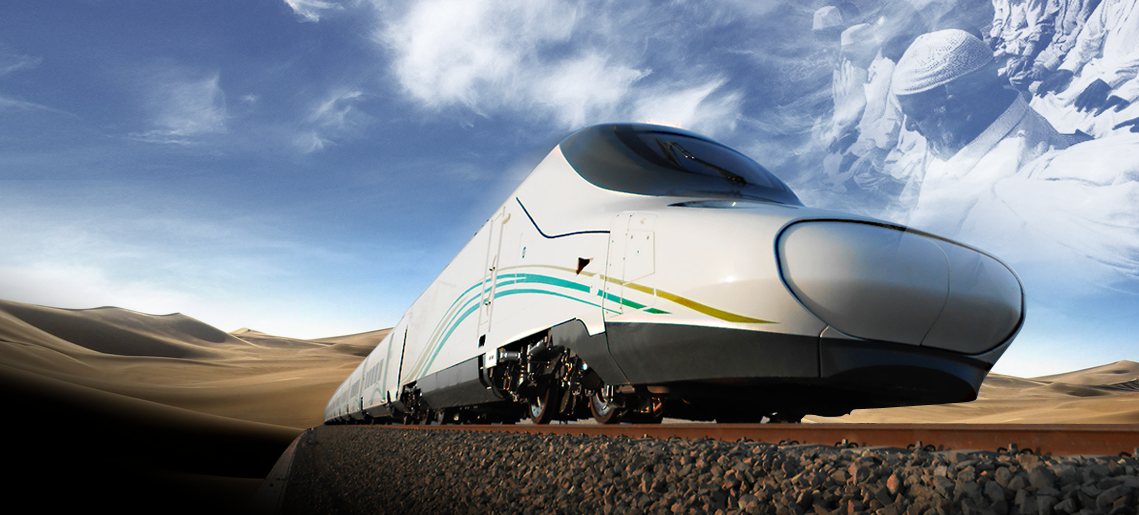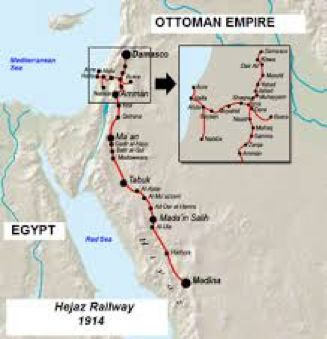West Side Story
The major news is that there is another railway up and running in Saudi Arabia. On 11th October the Haramain High Speed Railway opened for business. This is a 449 km line running in the west of the country from Madinah (Medina) to Makkah (Mecca). It links Islam’s two holiest cities and has been built primarily to transport pilgrims from one city to the other, and to and from Jeddah Airport, which is the principal port of entry for the tens of millions who come every year to perform Umrah or attend the Hajj.
His Majesty King Salman (Custodian of the Two Holy Mosques) performed an inaugural journey on 25th September and declared the railway to be open. Whilst the main axis between Madinah and Makkah is now open, with two intermediate stations at King Abdullah Economic City (KAEC), near Rabigh, and at Jeddah city are operational; the short branch to King Abdulaziz International Airport (KAIA) at Jeddah will open in a later phase.
The railway has been built by a Spanish led consortium and is based upon Spanish AVE technology and principles. The trainsets are built by Talgo and are capable of 360km/h, and when full line speed is authorised they will complete the end to end journey in just over two hours.

Publicity image of a Haramain trainset.
It's interesting to think that one hundred years ago the pilgrimage journey took up to two weeks by camel train.
Indeed in 1918 as the First World War was drawing to a close, Captain T.E. Lawrence was travelling about the Arabian peninsula by camel, whilst we in the west had been using trains to travel for almost a century, with the opening of the Stockton & Darlington Railway away back in 1825. Britain by 1918 had its railway network nearly reach its zenith with almost every town in the UK (and in Ireland too) connected to a national network. The myriad of small, and in some cases competing or parallel routes were only five years away from being “grouped” into the “Big Four” companies that were to become the GWR, LMS, LNER and SR; and this would mark the start of some rationalisation.
At that time there was one railway in Arabia (the Kingdom was not established until 1930), and this was the Hejaz Railway which ran from Damascus (Syria) through Amman (Jordan) to Madinah. It was originally planned to go as far south as Makkah and would become the main pilgrim route from northern Arabia and lands furth. From Damascus the line connected into a route to Istanbul, and there was a ferry crossing across the Bosphorus linking it to the European railway network. The Hejaz line was built by the Ottoman Empire and reached Madinah by 1908, however further construction was curtailed by lack of funds.


Current Haramain and historic Hejaz railway routes
Prior to 1908, Hajjis coming from the Mediterranean had an arduous land journey through the Midian wilderness, the Nafud desert and finally the Hejaz mountains. This could take up to 40 days, and in a round journey to and from Makkah about one in five pilgrims succumbed to disease, starvation or thirst. Never was the opening of a railway so transformative in pilgrimage travel.
However, it didn’t last long, as during the First World War Lawrence led attack and sabotage raids on the railway and was able to destroy key viaducts more quickly than the Turks could rebuild them. Eventually in 1918 the line was abandoned and left to the elements. Rolling stock left on the Saudi lands still lie where they were stranded or damaged. Some items have been moved to a museum in Madinah, and there is a small exhibit on show at Madain Saleh, some 450 km north of Madinah. The museum at Madinah is adjacent to the old Hejaz Railway terminus building, and it reportedly has restored one steam locomotive which can operate on a very short section of track. Thus at 1,300 km in length and operating for only 10 years the Hejaz must be one of the world’s most under-achieving railways.

100 years on, the dry desert air has preserved the abandoned relics of the Hejaz Railway
The Haramain railway is so called because it links the two holy cities. Each city has a “haram” (sanctuary area) and Haramain is the plural of haram. So Saudi Arabia has joined the elite group of countries that operate high speed railways. Welcome.
